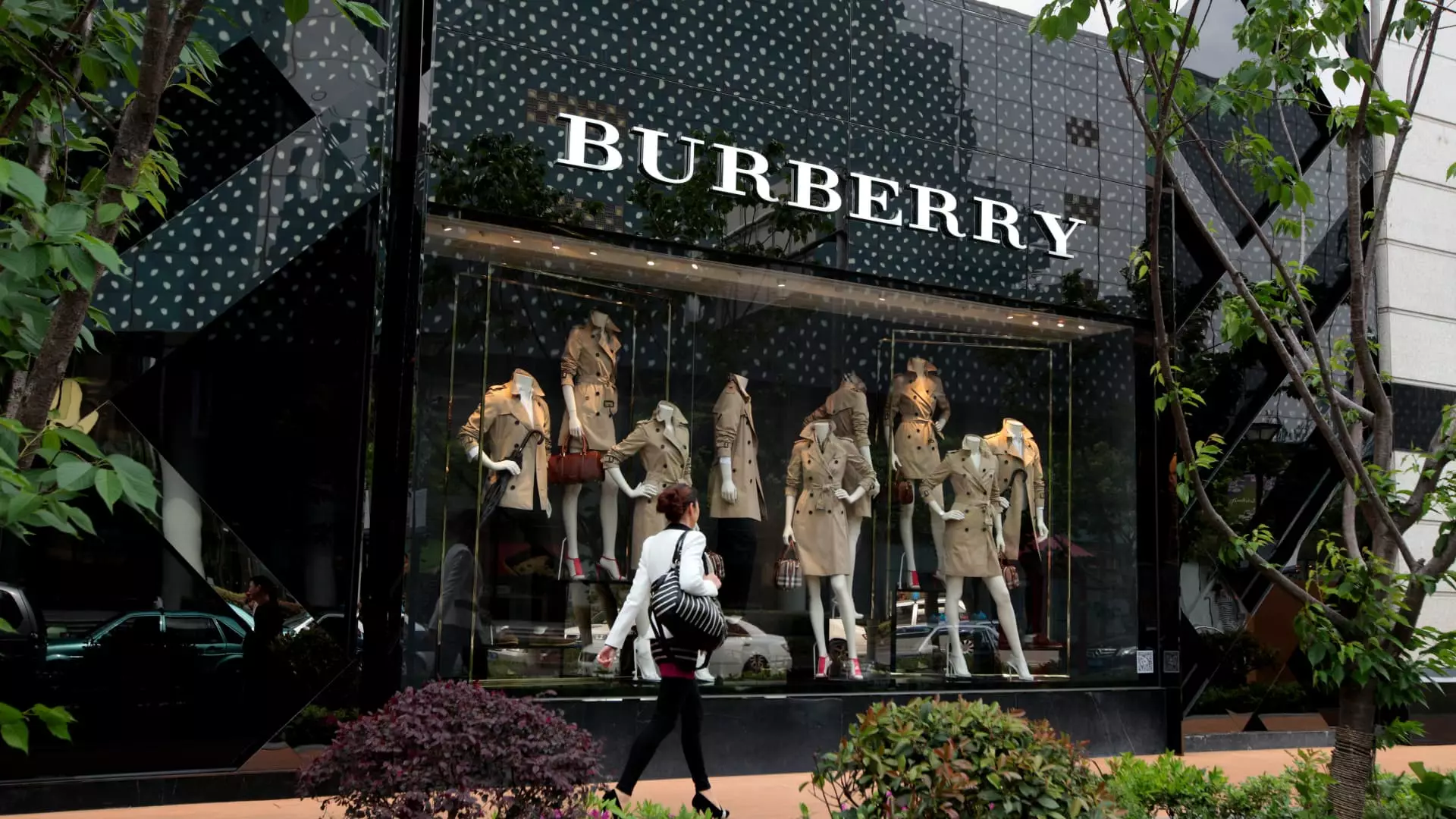In a fiercely competitive luxury market, Burberry has faced significant challenges that have put its brand at risk. Sales declines, a mystical connection with consumers, and leadership instability have plagued the iconic fashion house. The company has gone through several CEOs, each attempting to redefine the brand’s identity and elevate its market position with varying levels of success. With stocks declining around 39% year-to-date and sales down 20% for the last two quarters, Burberry’s new CEO Joshua Schulman is implementing a bold strategy aimed at reversing the brand’s fortunes. The urgency is palpable; with declining revenue and shrinking market share, the urgency for change couldn’t be more significant.
Announced recently, the “Burberry Forward” initiative marks a pivotal moment for the brand. This strategic overhaul is centered on rediscovering Burberry’s roots, emphasizing its heritage designs, and honing in on statement pieces that connect directly with the brand’s storied past. Schulman acknowledges that Burberry has, over the years, drifted away from its core products and distanced itself from the very items that initially endeared it to consumers. The “course correction” he speaks of aims not merely to stabilize but to lay a groundwork for sustainable growth.
The response to Schulman’s announcement has been overwhelmingly positive. Stocks surged more than 22% at one point, suggesting investor confidence in this new direction. Analysts have noted that a renewed focus on heritage could be exactly what Burberry needs to evoke brand loyalty and attract new interest. The luxury sector, currently experiencing a contraction, leaves little room for error; thus, any misstep could be detrimental.
Schulman’s remarks about the company’s earlier “elevation strategy” indicate that Burberry lost touch with its core competencies—particularly its staple outerwear and signature scarves. This renewed emphasis directs the brand’s efforts back to the basics, which many analysts argue are more viable in today’s luxury market. Piral Dadhania of RBC Capital Markets highlights that focusing on heritage and outerwear allows Burberry to become more authentic in less saturated categories. In doing so, the brand may find a unique selling proposition that sets it apart from competitors.
This intense focus is perhaps a response to the glaring realities of luxury retail today. Consumers are becoming savvier and more discerning, looking for authenticity and legacy. As such, a strategic pivot to reintroduce iconic pieces while emphasizing brand heritage could serve to rekindle interest in Burberry among consumers who favor well-established luxury over transient trends.
According to various analysts, major shifts are on the horizon—ranging from product design and pricing to marketing communications. Thomas Chauvet of Citi expects significant changes aligned with Burberry’s luxury positioning. However, this ambitious rebirth is not without its challenges. Schulman’s previous experience with Michael Kors could inform his strategies, resembling a “British Coach” method that targets aspirational consumers while enhancing visibility in off-price retailers.
However, having a strategic framework is merely the first step; the execution will be crucial. The challenge of reintegrating heritage with modern interpretations lies in the collaboration between Schulman’s business strategies and the creative direction spearheaded by the design team. The stakes are high, and the outcome remains to be seen.
Investor reactions indicate a sense of cautious optimism. Bernstein has upgraded its rating for Burberry, suggesting that the appointment of Schulman and the arrival of the “Burberry Forward” strategy indicate a promising trajectory. HSBC’s move to follow suit highlights a growing belief that positive change is on the horizon for the brand. However, the luxury market’s contraction still looms large, serving as a reminder that success will not merely stem from internal changes but also from external market conditions.
As Burberry embarks on this journey, its ability to balance heritage with innovation will be vital. Drawing inspiration from established luxury brands, Schulman must ensure that the essence of Burberry is not only preserved but also celebrated in modern contexts. Aligning consumer expectations with product offerings while capturing the authenticity that the brand is built upon will determine whether this strategic pivot successfully reinvigorates Burberry for future generations.
The stakes are high and the journey ahead is fraught with challenges, but if executed well, Burberry has the potential to reclaim its position among the upper echelons of luxury fashion. The brand’s best days lie ahead—provided it successfully reconnects with its storied heritage while navigating the complexities of the modern luxury landscape.

